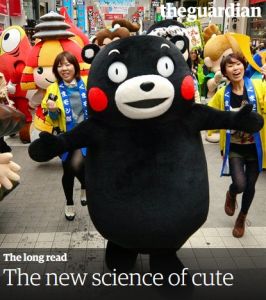Join getAbstract to access the summary!

Join getAbstract to access the summary!
Neil Steinberg
The New Science of Cute
The Guardian, 2016
What's inside?
“Cuteness” sells.
Recommendation
How do you explain the popularity of Hello Kitty? Why do people find themselves cooing at little babies? The answer may be quite simple: They’re cute. Writing for The Guardian, journalist Neil Steinberg takes a look at the fascinating – and adorable – world of kawaii, or “cuteness.” Steinberg uses the story of Kumamon, the beloved “mascot” of Japan’s Kumamoto Prefecture to illustrate how cuteness can generate attention – and earnings. getAbstract recommends this charming article to marketers, pop-culture fanatics and anyone needing a happy boost.
Summary
About the Author
Neil Steinberg is a columnist at the Chicago Sun-Times.

















Comment on this summary